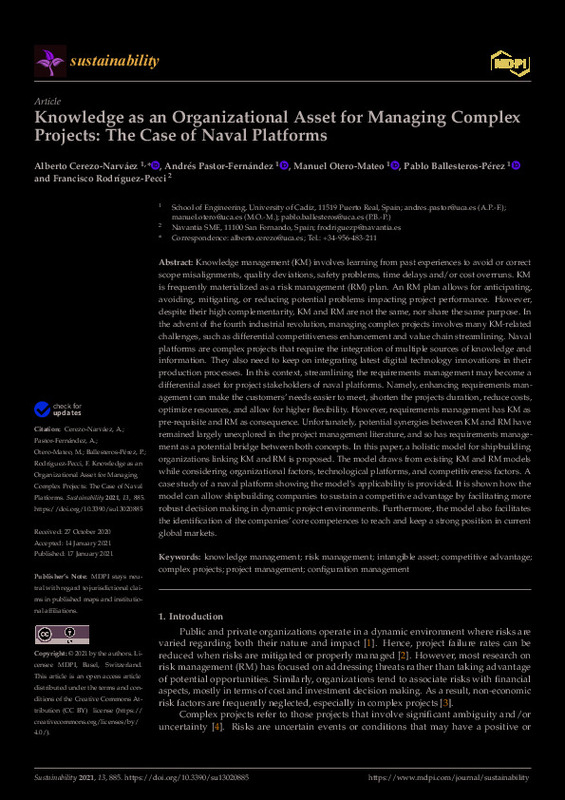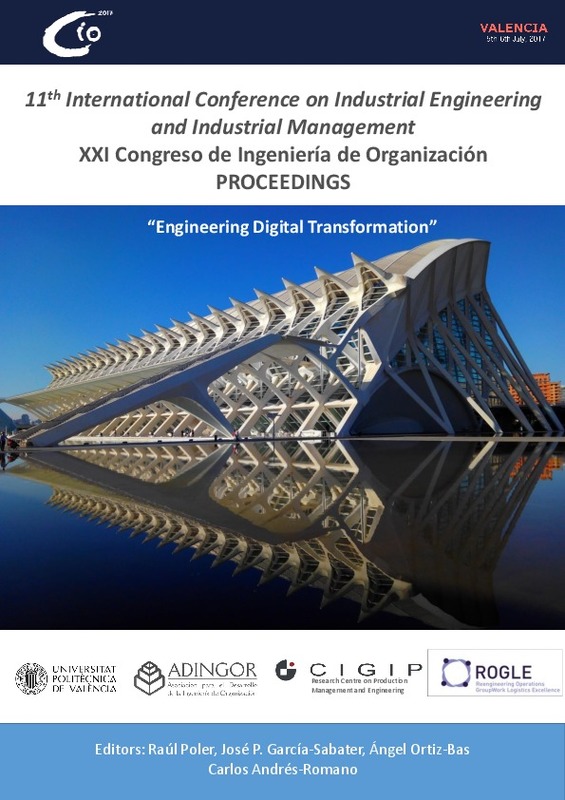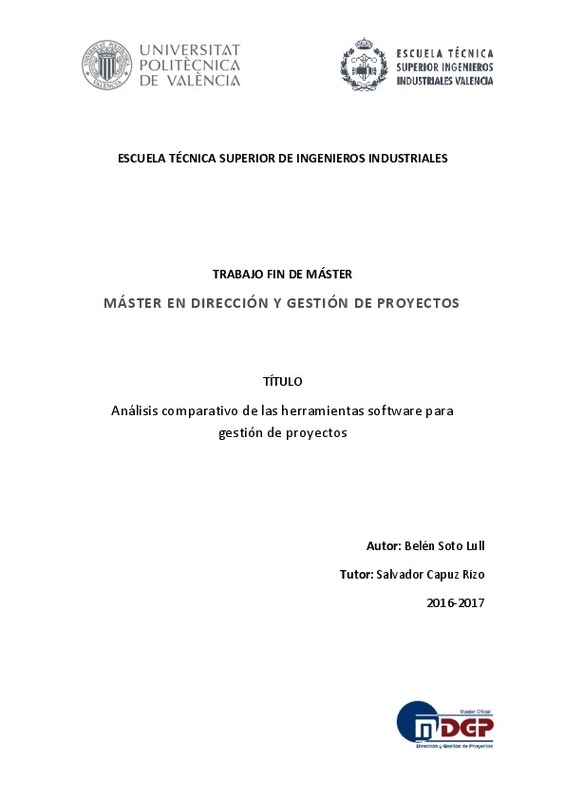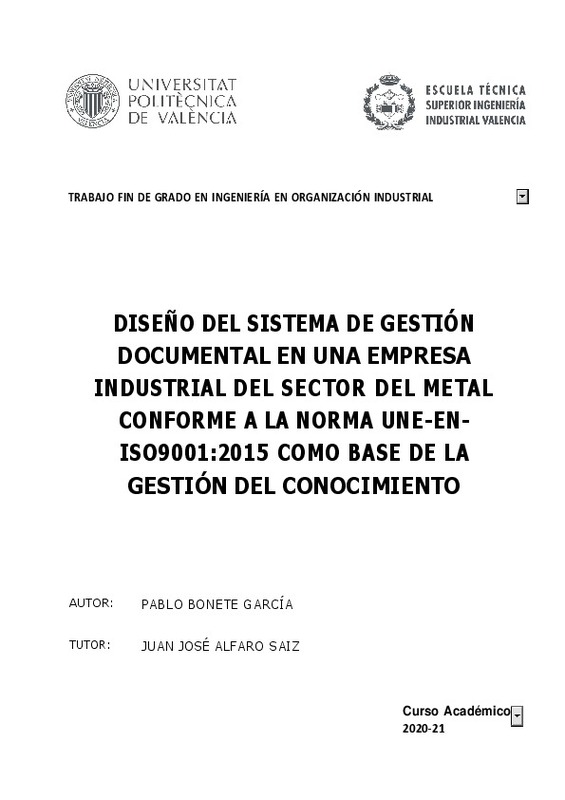JavaScript is disabled for your browser. Some features of this site may not work without it.
Buscar en RiuNet
Listar
Mi cuenta
Estadísticas
Ayuda RiuNet
Admin. UPV
Knowledge as an organizational asset for managing complex projects: The case of naval platforms
Mostrar el registro completo del ítem
Cerezo-Narváez, A.; Pastor-Fernández, A.; Otero-Mateo, M.; Ballesteros-Pérez, P.; Rodríguez-Pecci, F. (2021). Knowledge as an organizational asset for managing complex projects: The case of naval platforms. Sustainability. 13(2):1-20. https://doi.org/10.3390/su13020885
Por favor, use este identificador para citar o enlazar este ítem: http://hdl.handle.net/10251/193272
Ficheros en el ítem
Metadatos del ítem
| Título: | Knowledge as an organizational asset for managing complex projects: The case of naval platforms | |
| Autor: | Cerezo-Narváez, Alberto Pastor-Fernández, Andrés Otero-Mateo, Manuel Rodríguez-Pecci, Francisco | |
| Entidad UPV: |
|
|
| Fecha difusión: |
|
|
| Resumen: |
[EN] Knowledge management (KM) involves learning from past experiences to avoid or correct scope misalignments, quality deviations, safety problems, time delays and/or cost overruns. KM is frequently materialized as a risk ...[+]
|
|
| Palabras clave: |
|
|
| Derechos de uso: | Reconocimiento (by) | |
| Fuente: |
|
|
| DOI: |
|
|
| Editorial: |
|
|
| Versión del editor: | https://doi.org/10.3390/su13020885 | |
| Código del Proyecto: |
|
|
| Agradecimientos: |
All authors acknowledge the help received by the research group TEP-955 from the PAIDI (Junta de Andalucia, Spain). The first author also acknowledges the research stay at the Engineering Projects Department at Universitat ...[+]
|
|
| Tipo: |
|












